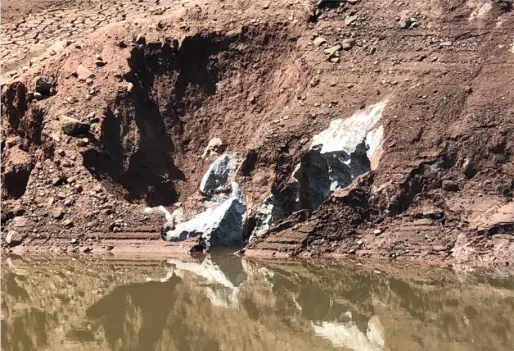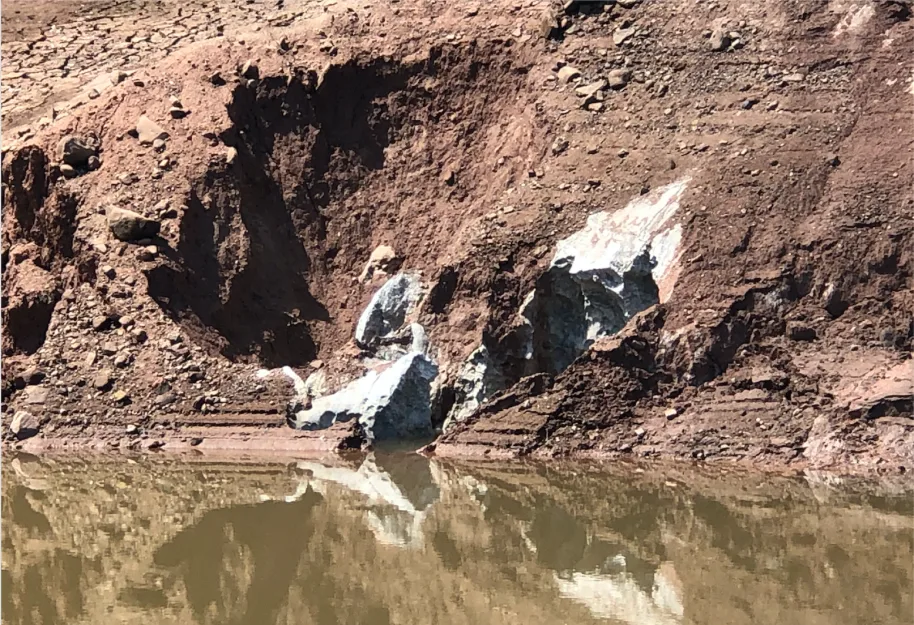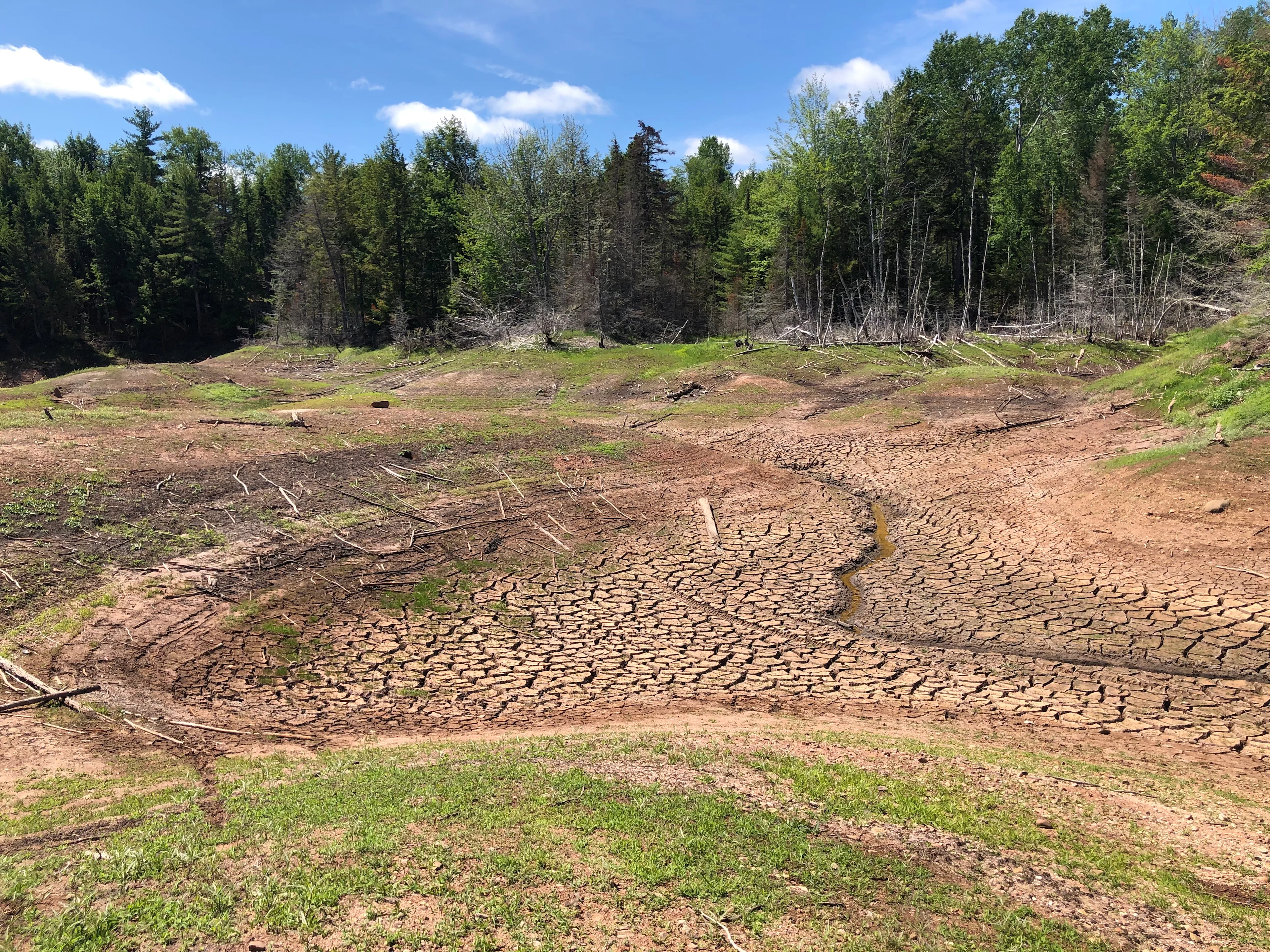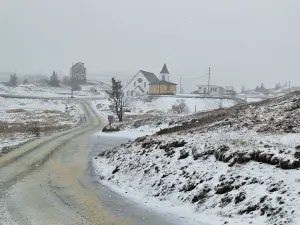
Drained Nova Scotia lake exposes potential hidden cave
For the volume of the water of Slade Lake to disappear into the underground, there has to be an extensive network of cavities.
Walking through the middle of a now drained Slade Lake, I ask geologist Amy Tizzard if the water would normally be up to our knees.
"I think it would be over our heads at this point," she replies. When you're taking a stroll in the middle of a recently drained lake, you really need to watch your step.
After literally getting stuck knee-deep in the mud (see video above), Tizzard pulled me out and brought me to a location where a potential new cave entrance was discovered during a drone flyover. Due to the danger of getting anywhere close to it, an ROV will soon be used to attempt to explore it further.

Potential hidden cave found in the now drained Slade Lake. Courtesy: Nathan Coleman
Tizzard says for the volume of the water of Slade lake to disappear into the underground, there has to be an extensive network of cavities. The discovery of an actual cave opening would be a first for her.
Hundreds of the freshwater mussels were killed as the lake rapidly drained.
"The water levels dropped so quickly that the mussels weren't able to move with the water levels," she says.

Slade Lake running dry. Courtesy: Nathan Coleman
Tizzard comes down to check water levels to see if the lake is still draining or beginning to fill back in. Since she began in early May, she’s noticed the levels get lower and lower, with new features being uncovered each time.
Slade Lake is part of a chain of sinkhole lakes that extend from the edge of Oxford, Nova Scotia, about five kilometres southwest towards Springhill. Formed from intersecting sinkholes, it's locally known as "Dry Lake" because it is known to empty periodically.

Slade Lake running dry. Courtesy: Nathan Coleman
But Tizzard says the last time it emptied this far, and dramatically, was in the 1970s.
"It has been a very dry spring and summer so far and that would contribute some of the evaporation of the lake water, but not to the extent that we're seeing here. We don't see the other lake in this area evaporating and disappearing like this one," says Tizzard.
The main culprit: sinkholes.
She thinks something may have shifted in the underground which opened up a new cavity or released a plug that had been created by vegetation or sediment, reactivating the mature sinkhole, unlike the now-infamous Oxford sinkhole (see below) which was brand new and formed two years ago in dramatic fashion but is now stable.










